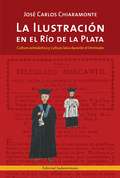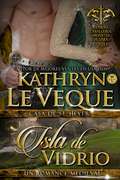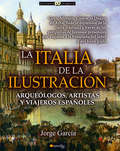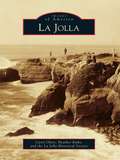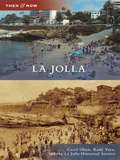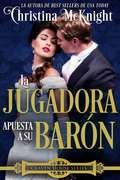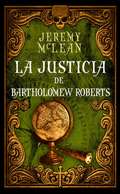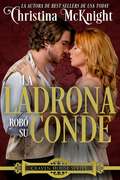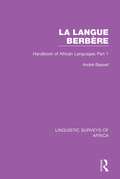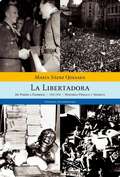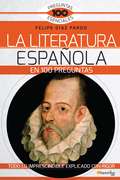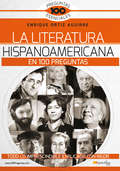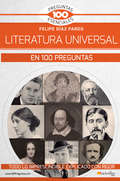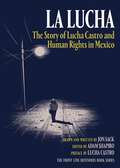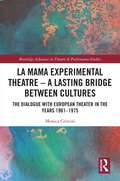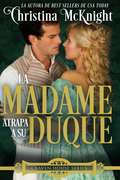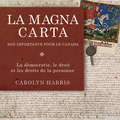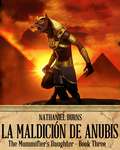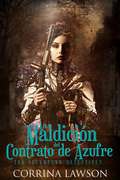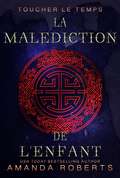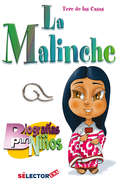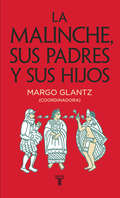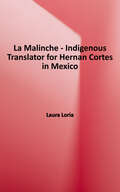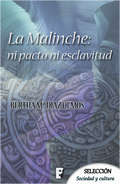- Table View
- List View
La Ilustración en el Río de la Plata: Cultura eclesiástica y cultura laica durante el Virreinato
by José Carlos ChiaramonteEste libro, ya considerado un clásico en su género, analiza losproblemas referidos a la vida intelectual en el Río de la Plata duranteel período colonial. Publicada originalmente en 1989, La Ilustración en el Río de la Plata esel corolario de una serie de investigaciones emprendidas por José CarlosChiaramonte desde los inicios de su carrera como historiador. Esta obra,de referencia ineludible para la historia de las ideas en la Argentina,propone un enfoque que trasciende la polarización del debate sobre losorígenes ideológicos de la revolución de independencia entre quienesprivilegiaban la influencia directa de la ilustración francesa y los quereivindicaban el arraigo en una tradición neoescolástica puramentehispánica. Comienza por ubicar a la denominada #ilustración rioplatense#no en sintonía directa con los pensadores franceses sino en el másadecuado marco de la historia intelectual peninsular de la época, cuyosrasgos principales no estaban dados por la vieja escolástica sino porlos intentos de conciliar los dogmas de la fe con las desafiantes#novedades del siglo#, algo que ha sido sintetizado con la problemáticaexpresión #ilustración católica#. El panorama intelectual rioplatense afines del siglo XVIII resultaba, pues, más consecuente con el reformismoborbónico que con un supuesto cuestionamiento del orden colonial. Y estecuadro, a su vez, revelaba otra falencia de la vieja polémica entre#liberales# y #católicos#: una interpretación mecánica del papel causalde las ideas en la historia política que, en el fondo, ambas visionescompartían.Si hoy la mayoría de los historiadores ha dejado atrás interpretacionesteleológicas #amén de partisanas# de los antecedentes de Mayo, si ya nose resuelve el dilema en la disyuntiva entre Rousseau o Suárez, entre elenciclopedismo y la teología política de los jesuitas, ello se debe enbuena medida al aporte de esta obra cuya reedición presentamos.
La Isla de Vidrio
by Kathryn Le Veque Paula Andrea Silva FauréLa Isla de vidrio por Kathryn Le Veque Una mujer inmanejable y un atrevido caballero; ¿Pueden ellos hallar el amor? 1333 A.D. – La encantadora y educada Señora Aubrielle Grace di Witney es lo que amablemente se llama una mujer ingobernable. Su tío, el Conde de Wrexham, ha recibido la custodia de su sobrina porque su madre ya no puede manejar la belleza de testaruda cabeza. Como un cobarde, el conde abdica a sus deberes a su caballero más poderoso, Sir Kenneth St. Héver con las instrucciones de convertirle en una sumisa señora. Aubrielle y Kenneth están en descuerdo desde el inicio; Kenneth espera obediencia y Aubrielle es menos que complaciente. Cuando las batallas terminan un extraño, maravillosa comodidad se instala, Kenneth llega a descubrir que Aubrielle es una señora con un secreto. A causa de este secreto, su madre es asesinada y Kenneth se encuentra así mismo protegiendo a Aubrielle porque quiere hacerlo, no porque se le ha ordenado. Sectas misteriosas y un loco guerrero quieren a la señora muerta por diferentes razones. Pronto se convierte en una prueba de las habilidades de astucia y caballerescas de Kenneth para mantener con vida a su amada Aubrielle.
La Italia de la Ilustración (Historia Incógnita)
by Jorge García SánchezGoya, Moratín, Godoy, el Duque de Alba: Todo el esplendor de la Italia ilustrada a través de las peripecias de famosos personajes que viajaron a la búsqueda del saber y del buen gusto. Goya, Moratín, Godoy o el duque de Alba viajaron por Italia para imbuirse en su cultura: fue el Grand Tour Español del siglo XVIII. Sumérjase en el esplendor de la Italia ilustrada a través de las peripecias de aristócratas insolventes, aventureros cosmopolitas, arqueólogos ilustrados y artistas canallescos que viajaron a la búsqueda del saber y del buen gusto. Aristócratas insolventes, aventureros cosmopolitas, arqueólogos ilustrados y artistas canallescos pueblan el universo de los españoles que viajaron a la Italia del Siglo de las Luces y de los albores de la contemporaneidad. Los escenarios de esta obra abrazan desde la pomposa Corte pontificia a las empedradas callejuelas de los barrios de mala nota, de las excavaciones a cielo abierto de Pompeya a los pintorescos canales venecianos. En la bota italiana, nunca mejor definida como el Gran Teatro del Mundo, escribieron, amaron y murieron nuestros ilustres compatriotas, a modo de actores de una tragicomedia dieciochesca. Diarios esbozados en los caminos, apuntes literarios y manuscritos redactados en el calor del meridión se alían para esclarecer esta trama italiana. Los testimonios vitales que aquí se recogen constituyen una fuente de primera mano imprescindible para aquellos que deseen profundizar acerca del peregrinaje intelectual y artístico que portó a tantos españoles a Italia.
La Jolla
by Carol Olten Heather Kuhn La Jolla Historical SocietyLa Jolla, California, famously known as "The Jewel," is noted for its natural beauty and appealing Mediterranean-like climate. Magnificent sea cliffs and caves, bathing coves, and sandy beaches have attracted visitors, developers, and residents since the 1880s. By the early 1900s, a small community developed with artists congregating to the internationally known Green Dragon Colony. Newspaper heiress Ellen Browning Scripps and her half-sister Eliza Virginia established residences and became the community's renowned philanthropists. Many beautiful homes and institutions, along with a growing commercial district next to the sea, owe their designs to architect Irving Gill. Today La Jolla still attracts visitors from around the world and is home to the rich, the famous, the avant-garde, and intelligentsia.
La Jolla
by Carol Olten La Jolla Historical Society Rudy VacaBeginning with its first settlement in the 1880s, La Jolla established its reputation as a Southern California seaside community known for incredible beauty and natural wonders, shores washed by the surf of the Pacific, and hillsides by jagged sandstone cliffs rising from the sea. Artists, architects, and an incredible philanthropist (Ellen Browning Scripps) were attracted to the community early on. Later came fantastic growth and change.
La Jugadora apuesta a su Barón.
by Christina McKnightCuando felices por siempre es el nombre del juego, los jugadores deben arriesgarlo todo en esta conclusión emocional de la serie de Craven House más vendida de Christina McKnight. LAS APUESTAS SALEN MAL Payton Samuels siempre supo que ella quería más de la vida que ser la hija más joven de la familia más despreciable de la sociedad. Mientras que sus hermanos se conformaron con apostar su futuro y felicidad al matrimonio, Payton aprendió de su madre desde el principio que el amor es fugaz y solo conduce a la decepción. Ella tiene un plan diferente: trabajar como institutriz para los hijos de Baron Ashford, pero solo lo suficiente para ganar su fortuna en una de sus infames fiestas de juegos enmascarados. Pero cuando pierde su capital, Payton ve su oportunidad de una vida independiente en llamas, hasta que Lord Ashford la sorprende pagando sus deudas. CUANDO EL AMOR ESTA EN LAS CARTAS. Desde la trágica muerte de su esposa, Damon Kinder, Lord Ashford, ha sido un hombre hecho de hielo. Su determinación de no volver a ser herido por el amor es tan profunda que ni siquiera puede conectarse con sus hijos. Pero cuando llega a sus vidas Payton, él cree que ha encontrado una solución: ella les dará el cariño y el apoyo que él no puede. A medida que pasa el tiempo, cerca de Payton su corazón comienza a descongelarse, y no puede dejar de pensar en la cautivadora institutriz. Pero cada jugador experimentado sabe que eventualmente, la suerte se acaba. ¿Pueden dos almas tan quemadas por los amores del pasado forjar un nuevo futuro juntos?
La Justicia De Bartholomew Roberts
by Jeremy McLean¿Se puede ser pirata y hombre de Dios al mismo tiempo? Bartholomew Roberts ha sido un pirata durante seis meses, y en el fondo de su mente esa pregunta persiste esperando ser respondida. "¿Pueden los piratas, los corsarios y todos los demás ser buenos hombres?" Roberts perdió su fe cuando vio a otros que afirmaban ser cristianos religiosos que se beneficiaban del pecado, y desde entonces ha traído su propio tipo de justicia sobre ellos. Sin embargo, la postura de Roberts ha causado una división dentro de su tripulación, y algunos pretenden deponerlo como capitán. Con enemigos por todos lados, Roberts necesita encontrar su respuesta rápidamente para no encontrarse en el fondo del casillero de Davey Jones. ¿Roberts encontrará su respuesta a tiempo y seguirá siendo un pirata o dejará la vida atrás? Vea a dónde lo llevan las pruebas de Roberts en sus historias cortas llenas de fe, acción y aventura ambientadas durante la Edad de Oro de la Piratería.
La Ladrona Robo Su Conde
by Patricia M Begona Christina McKnightPARA SALVAR A SU FAMILIA, DEBERÁ SER MALA... MUY MALA... La señorita Judith Pengarden tiene problemas: su familia tiene deudas y pronto perderán su hogar. ¿Qué debe hacer una buena hermana para salvar a los que ama de la ruina? Bueno, robar algunos pocos objetos de la casa de un aristócrata —objetos que, de seguro, nunca extrañarán— y venderlos para pagar las deudas de su familia. Por fortuna, para ella, conoce a Simon Montgomery, el nuevo conde de Cartwright, un solitario conocedor de antigüedades. Puede ayudarla a evitar la prisión por deudas y, tal vez, también pudiera reclamar su corazón. Salvo que, en lugar de robar en la residencia del vecino de Simon, entra en la casa equivocada… Simon está determinado a cambiar la forma en la que el mundo ve a su familia, aunque signifique que no pueda cumplir sus sueños de ser un académico para asumir su nuevo título. Cuando un ladrón irrumpe en su hogar y roba una preciada reliquia familiar, jura recuperarla. ¡Lo último que espera es que la joven que conoce en una fiesta al aire libre sea una ladrona! Cuando es descubierta con sus posesiones, ¿de qué forma podrá ella convencerlo que, a pesar de su decepción, su amor por él es verdadero?
La Langue Berbère: Handbook of African Languages Part 1 (Linguistic Surveys of Africa #13)
by André BassetOriginally published in 1952, this volume shows the structural characteristics of the Berber language and its interrelations as far as these are known; the distribution of the language and the numbers speaking it; its use as literary and educational media and as a lingua franca.
La Libertadora (1955-1958)
by María Sáenz QuesadaLa Libertadora propone el relato histórico del tiempo que va desde la caída de Perón hasta la presidencia de Frondizi. En esos 32 meses dos presidentes militares gobernaron con carácter provisional: el general Eduardo Lonardi, que intentó sin éxito llevar a la realidad su divisa revolucionaria, #No hay vencedores ni vencidos#, y el general Pedro Eugenio Aramburu, que se empeñó en desperonizar a la sociedad y en preparar la entrega del gobierno a las fuerzas políticas partidarias. En este período de facto se puso énfasis en incorporar a la Argentina al orden mundial de la posguerra dentro del modelo de las naciones democráticas. En ese sentido el proceso de desperonización imitaba lo ocurrido luego de la caída del fascismo en Europa. Pronto las diferencias entre un caso y otro fueron evidentes. El peronismo retrocedió aunque sin dejar en ningún momento de constituir una alternativa de poder y esto condicionó el regreso al régimen constitucional y dio lugar a proscripciones. La Libertadora ofrece un panorama sustancioso de la época y de sus protagonistas; individuos y grupos son retratados con fidelidad sobre la base de documentos de primera mano, muchos de ellos absolutamente inéditos. María Sáenz Quesada aborda con honestidad intelectual y habilidad narrativa un período polémico cuya memoria está empañada por los fusilamientos de militares y civiles de junio del 56, razón por la cual, cuando se trata de escribir esta historia, parafraseando a Octavio Paz, #las viejas heridas sangran todavía# .
La Literatura española en 100 preguntas (100 Preguntas esenciales)
by Felipe Díaz PardoTodo el conocimiento básico sobre este rico tesoro cultural: movimientos, estilos, obras y autores fundamentales. Aprenda a distinguir épocas, formas o estilos literarios y a reconocer movimientos o generaciones literarias. La mejor forma de entender la literatura española de manera entretenida y rigurosa. Géneros literarios– Formas y estilos literarios – La sociedad y la literatura– Movimientos y generaciones literarias– El argumento y la historia– Personajes y tipos literarios – temas y tópicos literarios – Ambientes literarios – Los autores – Las obras ¿Cuáles son los premios Nobel de la Literatura española?, ¿Qué obras representativas reflejan los temas característicos de la generación del 98? , ¿Y por qué se dice que Lázaro de Tormes es el antihéroe? , ¿Cuántas historias cuenta el Quijote? , ¿Qué hizo Lope de Vega para revolucionar el teatro de su época?, ¿Por qué no se consideran a Gustavo Adolfo Bécquer y a Rosalía de Castro plenamente románticos? , ¿Influye la literatura en la sociedad de su época? , ¿Cuándo explotó el boom de la novela latinoamericana? Rigor y amenidad reunidos en una colección de “alta divulgación”. Libros rigurosos pero de fácil lectura, que podrá disfrutar incluso cuando solo disponga de unos momentos. Un recorrido completo y seductor por los grandes temas del conocimiento humano. Un viaje maravilloso al mundo de la ciencia y la cultura.
La Literatura hispanoamericana en 100 preguntas (100 Preguntas esenciales)
by Enrique Ortiz AguirreDescubra el intelectualismo borgiano, el fantástico torrente cortazariano, el preciosismo verbal dariano, la sugerente narrativa de García Márquez, la fantasía de Isabel Allende o el lirismo en prosa de Vargas Llosa. Las obras y escritores fundamentales, sus mecanismos retóricos, tendencias literarias y estilos, la esencia del realismo mágico y la auténtica naturaleza del boom. ¿Gabriela Mistral representa una literatura feminista?, ¿Conoces los textos más eróticos de Julio Cortázar?, ¿Cómo influye Pablo Neruda en los poetas españoles?, ¿Cuál es el origen de la novela del tirano?, ¿Relación entre los cuentos de Bioy Casares y el género policiaco?, ¿Cuáles son las principales Vanguardias literarias hispanoamericanas?,¿Qué tipo de cuentista es Jorge Luis Borges?, ¿Qué rifirrafe hubo entre Vargas Llosa y García Márquez?
La Literatura universal en 100 preguntas (100 Preguntas esenciales)
by Felipe Díaz PardoDescubra los movimientos, obras y autores fundamentales del patrimonio literario de la humanidad. Aprenda a distinguir épocas y estilos, conozca la esencia de los textos más representativos de manera entretenida y rigurosa, aprenda a disfrutar y comprender mejor las obras que interpretan el mundo que nos rodea. Una completa panorámica del tesoro cultural de las letras universales. ¿Qué tiene que ver el vino con el nacimiento del teatro? ¿Qué nos enseña El Libro de los muertos, monumento de la literatura egipcia? ¿Cuándo nace la bohemia? ¿Qué sabemos de la literatura japonesa? ¿Qué historia cuentan los escritores de la Generación perdida? ¿Qué personajes femeninos de la literatura universal es necesario conocer? ¿Por qué están vigentes todavía los temas de las obras de Shakespeare? ¿A qué llamamos novela gótica? ¿Quiénes son los escritores con más luces de la literatura europea del siglo XVIII? ¿Cuáles son las grandes obras de la literatura juvenil? ¿Qué nuevas formas literarias inventa la literatura más actual?
La Lucha: The Story of Lucha Castro and Human Rights in Mexico
by Jon SackA front-line human rights defender fighting murderous impunity in the Mexican borderlands The Mexican border state of Chihuahua and its city Juárez have become notorious the world over as hotbeds of violence. Drug cartel battles and official corruption result in more murders annually in Chihuahua than in wartorn Afghanistan. Thanks to a culture of impunity, 97 percent of the killings in Juárez go unsolved. Despite a climate of fear, a small group of human rights activists, exemplified by the Chihuahua lawyer and organizer Lucha Castro, works to identify the killers and their official enablers.This is the story of La Lucha, illustrated in beautiful and chilling comic book art, rendering in rich detail the stories of families ripped apart by disappearances and murders—especially gender-based violence—and the remarkably brave advocacy, protests, and investigations of ordinary citizens who turned their grief into resistance.
La MaMa Experimental Theatre – A Lasting Bridge Between Cultures: The Dialogue with European Theater in the Years 1961–1975 (Routledge Advances in Theatre & Performance Studies)
by Monica CristiniThis book focuses on the role of La MaMa Experimental Theatre within Avant-garde theater during the 1960s and 1970s. This study investigates the involvement of the Off-Off Broadway circuit in the Avant-garde experimentations both in the United States (New York specifically) and in Europe. This exploration shows the two-way influence – between Europe and the United States – testified by documents gathered in years of archival research. In this relevant artistic exchange, La MaMa (and Ellen Stewart as its founder and artistic director) emerges as a key element. La MaMa’s companies brought to Europe the American culture and the New York underground culture, while their members learnt European training techniques by attending workshops or taking part in the research of Eugenio Barba, Jerzy Grotowski, and Peter Brook, and brought their principles back to the United States. This book goes through a chronological path that presents some key cases of collaboration between the above-mentioned European masters and some La MaMa’s artists and companies: Tom O ’Horgan and La MaMa Repertory Troupe, the Open Theatre, Andrei Serban and The Great Jones Repertory Company, La MaMa Plexus. This book will be of great interest to students and scholars in theater and performance studies.
La Madame atrapa a su Duque.
by Christina McKnightMadame Marce Davenport , es una mujer orgullosa de lo que ha logrado con su familia y con la escandalosa Craven House, a pesar de haber sido arrojada de su casa y despojada de su lugar en la sociedad de pequeña. Excepto que todo está construido en base a una mentira. Cuando un duque arrogante entró en su casa años atrás, ofreciéndole una forma de mantener el burdel abierto, y ella aceptando el trato entro en un juego de engaños. Pero ahora que sus hermanos ya han encontrado su felicidad, Marce finalmente puede vivir la vida que siempre había deseado: una basada en la verdad. Y eso significa cortar los lazos con el hombre que ha reclamado demasiados días de ella, tanto en la realidad como en la fantasía. Rowan Delconti, el duque de Harwich, un hombre que albergo demasiado odio por mucho tiempo: con su padre, con la mujer que rompió el matrimonio de sus padres y con los niños que se ganaron el amor del padre. Está decidido a que su madre no vuelva a ser infeliz, incluso si eso significa fingir estar casado con Marce, para que su madre piense que ha encontrado al amor de su vida. Pero la bella dama alimenta su fuego como ninguna, y la farsa comienza a sentirse muy real. Cuando los secretos de Marce y Rowan finalmente salen a la luz, su pasión puede no ser suficiente para detener el dolor del pasado. ¿Pueden dos personas que se han hecho tanto mal, descubrir un día que en realidad son el uno para el otro?
La Magia del Pan di Zenzero: Una Storia sui Desideri di Natale
by Sandra SookooA volte l’unico modo per capire quanto si stimi un uomo è ricorrere alla magia del pan di zenzero. Londra 1888, Mrs Eleanor Redding, donna dal carattere scontroso, lavora per la Compagnia del Telegrafo Western Union, il che le dà una certa indipendenza, ma lavorare è per lei anche un modo per nascondersi da un passato deludente, in America. Quando accidentalmente intercetta un messaggio in codice Morse che allude a una clandestina attività criminale, prontamente accetta la sfida. Almeno così non penserà di essere ancora una volta sola per le vacanze di Natale. Perché gli uomini non riescono a guardare al di là delle sue spine e delle cicatrici del cupore, e non fanno di tutto per conquistarla? Mr Cameron Hallewell, nipote del conte di Albemarle, è impiegato presso il Ministero dell’Interno e si occupa di affari esteri. Il suo lavoro consiste nel proteggere gli interessi britannici, ma desidera che una donna lo sorprenda inaspettatamente, una donna che lo desideri per come è, non per la sua posizione sociale. Quando arrivano notizie di un agente segreto straniero che si aggira per Victoria Station allo scopo di perpetrare un atto terroristico, si mette sulle sue tracce... ma troverà invece una donna affascinante che pedina sconosciuti sui marciapiedi della stazione ferroviaria. Forse è proprio lei una spia? Sono come il diavolo e l’acqua santa, ma nonostante i rovi di spine intorno al cuore di Eleanor e la delusione d’amore di Cameron con i suoi segreti, fra i due scoccherà la scintilla. Questa improbabile coppia si metterà al lavoro per stanare la spia ed evitare che il peggio si abbatta su Londra. I due però si accorgeranno di essersi innamorati e cominceranno a fidarsi l’uno dell’altra. È Natale, Eleanor e Cameron verranno trascinati nell’intrigante e inaspettata prospettiva di un corteggiamento e in una storia d’amore che attraverserà i secoli... se solo sapranno abbandonarsi al desiderio e alla passion
La Magna Carta, son importance pour le Canada: La démocratie, le droit et les droits de la personne
by Carolyn HarrisLa Magna Carta avait été conçue au départ dans le but d’assurer que le roi Jean respecte les us et coutumes de la noblesse au XIIIe siècle. Au cours des huit cents années qui se sont écoulées depuis sa création, elle est devenue la pierre angulaire des idéaux de la démocratie pour tous. La « Grande Charte » a inspiré de nombreux documents portant sur le respect des droits de la personne, y compris la Déclaration d’indépendance des États-Unis, la Déclaration des droits de l’homme et du citoyen de la France, et la Déclaration universelle des droits de l’homme des Nations Unies. Pour les Canadiens, la Magna Carta a servi de modèle pour d’importants documents, depuis la Proclamation royale de 1763, qui a façonné les colonies britanniques de l’époque et les relations de celles-ci avec les Premières Nations, jusqu’à la Charte des droits et libertés. La Magna Carta : son importance pour le Canada est une célébration des huit cents années d’existence du document ainsi que de son influence sur le Canada et le monde entier.
La Maldición de Anubis
by Kevin Heit Nathaniel Burns Viveki Devi Ma1231 A.C., Valle de los Reyes, Antiguo Egipto Secciones incompletas del libro de la muerte halladas en la tumba de Ramesses y la muerte de un prominente escriba de tumbas provocan temor a la maldición de Anubis en Deir el-Medina. Mientras que la falta de testigos y una comunidad de trabajadores muy unidos estorban, Neti-Kerty y Shabaka investigan en un tiempo en que todo Thebes espera la llegada del faraón para el bello festival del valle. Cuando Neti comienza a sentir sensaciones extrañas y la vida del faraón corre riesgo se evidencia que hay una mayor y más siniestra intriga en los eventos.... La Maldición de Anubis nos lleva a una tierra impregnada de magia y misterio. Pinta una detallada imágen del Antiguo Egipto en toda su gloria. Recreando fielmente una de las eras más destacables en la historia de Egipto, el autor Nathaniel Burns teje una estremecedora y siniestra historia de los misterios del Antiguo Egipto revelada a través de un elenco de personajes que el lector morderno reconocerá aunque los milenios hayan pasado. Así que enciende un incienso, siéntate junto a la luz y retira las cortinas del sombrío pasado con esta fascinante historia de amor e intriga entre los vivos y los muertos en una de las civilizaciones más intrigantes de la historia. También disponible en Amazon: La Hija del Momificador (La Hija del Momificador serie #1) Princesa de Egipto (La Hija del Momificador serie #2)
La Maldición del Contrato de Azufre: Los Detectives Steampunk, Libro 1 (Los Detectives Steampunk #1)
by Corrina LawsonEn un Londres victoriano donde la magia da poder a la tecnología de vapor... Joan Krieger sueña con revolucionar la moda para este nuevo y modernizado mundo, pero un enemigo oculto acecha el negocio de costura de su familia, convirtiendo su sueño en una pesadilla. Cuando Joan atestigua que una clienta es asesinada con magia, busca al único hombre que puede ayudarla: Gregor Sherringford, consultor detective. Juntos, serán un equipo formidable, pero su investigación levantará una cortina de tristeza y secretos que amenazan todo en la vida de Joan. Solo arriesgando su propia alma podrá descubrir la verdad, una verdad que Gregor teme que ella no podrá sobrevivir.
La Malediction de L'Enfant
by Amanda RobertsEn un seul instant, sa vie ne fut plus la sienne... Dans les rue de Péking, Sparrow survit en faisant les poches des passants et en volant de la nourriture aux marchands de rue, jusqu'au jour où elle touche un objet qui la précipite dans le temps, éveillant en elle un pouvoir qu'elle ne comprend pas, ni ne contrôle. Sparrow est obligée d'utiliser sa "ruse" pour dire la bonne fortune, un effort qui, au mieux, l'épuise, au pire, pourrait la tuer. Pour Sparrow, chaque jour devient un cauchemar auquel elle a peur ne pouvoir échapper. Puis, elle attire l'attention de l'Impératrice elle-même. Une femme d'une crauté et d'un pouvoir incommensurables - la femme qui a la capacité de changer la destinée de Sparrow pour toujours... Ne manquez pas La Malédiction de l'Enfant, le préquel excitant de la trilogie Toucher le Temps.
La Malinche
by Tere de las CasasLa colección Biografías para niños comparte este lado infantil de la vida de emperadores, libertadores, caudillos y presidentes. En esta obra descubrirás a la niña La Malinche, nativa de Painala, cerca del puerto de Coatzacoalcos, en Veracruz. Ella misma te narrará que su papá la vendió como esclava a un cacique de Tabasco; que cada vez que cometía alguna travesura, su castigo era oler chile, que el cenzontle le brindó el don de aprender varias lenguas, entre ellas el náhuatl, el maya y el castellano; que las niñas mayas jugaban a la casita con sus muñecas de trapo e iban a la playa, y muchas otras actividades que también te divertirán.
La Malinche, sus padres y sus hijos
by Margo Glantz¿Quién fue realmente la Malinche? ¿Por qué ocupa un lugar tan importante en la historia, la identidad y la idiosincrasia de los mexicanos? La Malinche es una de las figuras fundacionales de la historia de México, pero su historia siempre ha sido objeto de polémicas y contradicciones. Intérprete y compañera de Hernán Cortés, ha sido deificada por algunos y satanizada por otros, ha inspirado tragedias, dramas románticos, crónicas, poemas y hasta caricaturas. Como todo personaje mítico e histórico, es necesario estudiarla periódicamente, indagar en nuestras raíces, revisar el mestizaje y replantear sus andanzas actuales y pasadas para aclarar los múltiples significados de uno de los enigmas culturales más poderosos en México y Latinoamérica. La Malinche toca fibras tan sensibles, que su figura se ha visto envuelta por el mismo halo de sospecha que rodeó a Eva a partir de su expulsión del paraíso; ha sido condenada al silencio y convertida en uno de los personajes más frecuentes de la escritura criolla. Este volumen reúne las memorias del coloquio titulado "La Malinche, sus padres y sus hijos", en el que participaron Carlos Monsiváis, Roger Bartra, Hernán Lara Zavala, entre otros connotados escritores. En su conjunto, estos textos ofrecen una mirada panorámica sobre los mitos, usos y costumbres que han consolidado a Malintzin como el paradigma por excelencia del mestizaje.
La Malinche: Indigenous Translator for Hernan Cortes in Mexico (Women Who Changed History)
by Laura LoriaWomen's contributions throughout history are often overlooked or minimized when compared to those of men. Readers will learn the true story of Malinche, a slave girl who was instrumental in the Spanish conquest of Mexico. Her courageous but brief life is examined, focusing on her time with explorer Hernán Cortés. Myth and fact are discussed and explained, with primary sources to illustrate this period in Mexican history. Readers will connect with the story of a young person who bravely endured terrible circumstances to change Mexico forever in the 1500s. Her legacy in Mexico, folklore, art, and politics endures today.
La Malinche: ni pacto ni esclavitud
by Bertha M.ª Díaz OlmosUn viaje apasionante por la historia de La Malinche, su vida y el papel que desempeñó dentro del momento histórico de México y España. En cada cultura e historia siempre hay una mujer que provoca el cambio y da un vuelco al milenio. En el caso de México es y será Malintzin, Doña Marina, La Malinche. Un relato que se adentra en las entrañas y el corazón, de una figura determinante de la conquista española; un arquetipo femenino mexicano. Al mismo tiempo que se describe su labor como intérprete y consejera, se incide en su inteligencia y su capacidad para adelantarse a su época. Una narración enmarcada en el entorno prehispánico en el que vivió y el papel que desempeñó dentro del momento histórico de México y España. Un urdido dialogo poético de ficción entre doña Marina/La Malinche y las opiniones de literatos de diferentes países que han escrito sobre ella, que transmite su fuerza y determinación, para sobrevivir al nuevo entorno y a su complicada relación sentimental con el conquistador Hernán Cortés.
